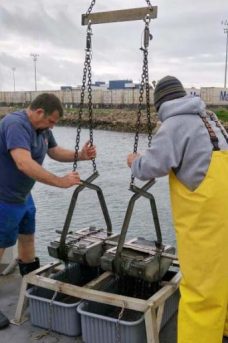Study offers guidance for optimizing TIE study design

SCCWRP and its partners have completed a two-year study examining how to optimize the design of toxicity identification evaluation (TIE) studies to improve confidence in the results.
The project, published as a SCCWRP technical report in January, involved oversampling in Consolidated Slip, an area of the Los Angeles Harbor with high sediment toxicity levels, and then using statistical analysis to develop best-practices recommendations for TIE study design.
Among the study’s recommendations is to conduct TIEs at a minimum of three locations within a study site. Researchers also should compare observed contaminant concentrations to known toxicity thresholds to help reduce uncertainty in interpreting results.
TIEs are the primary method used by water-quality managers to determine the cause of toxicity in a water or sediment sample. The analysis typically includes a series of chemical treatments of the sample to selectively remove or alter the toxicity of specific contaminant groups, such as trace metals, nonpolar organics and pyrethroid pesticides.
More news related to: Sediment Quality